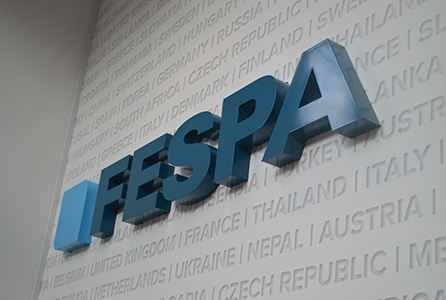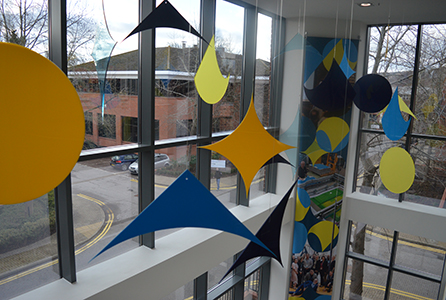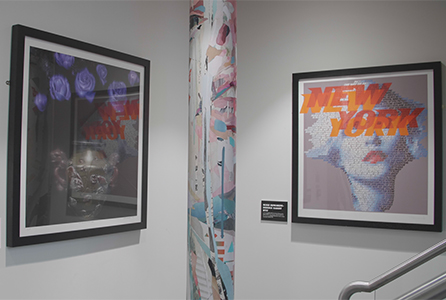FESPA HQ transformed by print and sign
HNS Signs is “thrilled” to have been chosen to transform the UK headquarters of FESPA after the organisation decided it wanted to make better use of the space whilst recognising the diverse strengths of its members.

Thursday, 18 Jul 2019 09:46 GMT

HNS Signs were selected to transform FESPA’s HQ
FESPA comprises a broad community of textile printers, garment decoration, graphic point-of-sale display printers, signage companies and industrial printers.
When newly appointed technical support manager Graeme Richardson-Locke identified a need for more character and personality in the atrium of FESPA’s Dorking base, a careful selection process to find the right signage provider began.

FESPA wanted to “bring life to the space” through signage, 3D applications and fabrics in a way that reflected the industry and its member associations”
FESPA wanted to “bring life to the space” through signage, 3D applications and fabrics in a way that incorporated all the different types of print and signage techniques and reflected the industry and its member associations.
HNS Signs managing director Michelle Henry was involved in the project from start to finish, making sure the specific brief was done exactly as planned. The firm also designed, manufactured, project managed and commissioned almost every aspect of the project to ensure consistency and attention to detail throughout.

FESPA wanted to “bring life to the space” through signage, 3D applications and fabrics
Banner Box assisted with the fabrication of two 7m high banners, which incorporated images reflecting the day-to-day operations of FESPA.
A particularly tricky aspect of the project was two pillars in the building. The firm used artwork from two excess prints and printed onto vehicle wraps and matte-laminated them. Henry explains: “The install of these proved challenging since the pillars were not quite level and the bottom was wider than the top.”

Instead of using window graphics, a mobile was created using FESPA’s brand colours and symbols
Another restriction was the application of signage or graphics to the walls and glass facades. To overcome this, Henry and her team developed a solution to make the most of the tall building.
To do this they developed a mobile structure using solid, frosted semi-translucent and translucent Perspex acrylic finished with CNC cutting and flame polishing. The mobile was designed using FESPA’s colours and symbols from its branding.

Art was a central component of the initial designs and demonstrate the abilities of FESPA’s members
Art was a central component of the initial designs and through the FESPA Awards and archives, Richardson-Locke selected various artwork to be displayed in the atrium.
Richardson-Locke describes the art as both aesthetically pleasing and representative of the “broad swathe of technical capability”. The art is accompanied by technical information, taking it “beyond the importance of aesthetics” and making it about how things are done. “Because this is what our members are doing,” he adds.

What we have achieved is a great cross section of creative output that I think reflects the community that FESPA supports”
Reflecting on the finished product, Richardson-Locke says: “What we have achieved is a great cross section of creative output that I think reflects the community that FESPA supports, and I think that when my colleagues and
I come into work in the morning, we will have these visual cues around us reminding us what an inspiring, interesting business we’re all involved with.”
If you have any news, please email carys@linkpublishing.co.uk or join in with the conversation on Twitter and LinkedIn.